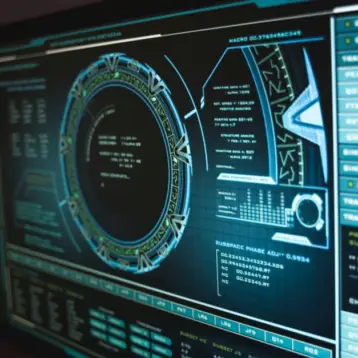The Stingray Project’s main unit is based on the iRobot PackBot. Small unmanned ground vehicles (UGVs) such as this one allow soldiers to inspect and destroy suspected improvised explosive devices (IEDs) from a safe distance. A typical UGV transmits video from an onboard camera back to the operator control unit (OCU) that displays the video on a computer screen. The result reminds one of a first-person shooter video game, as the operator teleoperates the UGV using a joystick, gamepad, or other input device. This teleoperation method works well at slow speeds in simple environments; however, since the user sees the world through a fixed camera, the operator’s situational awareness about the surroundings is limited. These limitations are more significant when moving in speeds higher than 8kph.
iRobot Corpopration has tried to improve the operators’ awareness by creating an “immersive telepresence” which gives the operator the impression of being in the vehicle. Moreover, semiautonomous driver-assist behaviors allow the vehicle to safely maneuver according to the driver’s intent. The assisting software was programmed in a similar manner to modern fighter aircraft, designed to be dynamically unstable; the engineers have programmed the software to freely interpret the pilot’s control inputs.
In general, faster small UGVs would be useful in a wide range of military operations. Up until now UGVs were used mostly for explosive inspection, but thanks to the new technologies more tasks could be performed. For instance, when an infantry squad storms a building held by insurgents, speed is essential to maintain the element of surprise. Another example is an infantry unit patrol within a city; a UGV that can keep up would be very helpful. Of course, the need to steer around obstacles isn’t so simple; even larger, manned vehicles require special training. A bump that would be absorbed by a large vehicle’s suspension can send a small, fast-moving UGV flying into the air.
In phase 1 of the Stingray Project (shown on this video), the team mounted a Chatten Head-Aimed Remote Viewer (HARV) on an iRobot Warrior UGV prototype and on a surrogate small UGV based on a high-speed, gas-powered, radio-controlled car platform. The operator wore a head-mounted display and a head tracker. Using the display, he watched video from the HARV’s camera, mounted on a pan/tilt/roll gimbal. The HARV tracks the operator’s head position and turns the camera to face the same direction, thus giving the user the feeling the iRobot imitates his head movements. The result, according to iRobot Corp, is a fully immersive experience, which studies have shown can improve mission performance by 200–400%.
Phase 2 of the Stingray Project will include speed improvements. By developing a high-speed, wheeled version of the vehicle, a top speed of 32kph could be reached. In order to assist the driver in controlling such speeds, the team will use technologies developed for the prior Wayfarer Project. Those previously designed behaviors employ light detection and ranging to determine the orientation of features such as street boundaries, building walls, and tree lines. The Wayfarer Project has demonstrated the system’s reliable performance in both urban and rural terrain.
Other future adjustments include the addition of behaviors that will allow the vehicle to autonomously maintain an operator-specified heading (despite possible perturbations caused by the environment) and the enhancement of situational awareness by adding a panoramic view inset as well as a rear-view inset. Another method in which operators’ interface will be improved is a haptic feedback to the HARV, which allows the operator to feel collisions and sense terrain characteristics. The goal, ultimately, is to provide constant awareness of obstacles and threats in all directions.
TFOT has also covered iRobot’s Negotiator, a slimmed down and affordable robot capable of climbing stairs and evaluating potential dangers, and VIPeR, a portable, lightweight robot designed to operate in an urban environment, introduced by the Israeli company Elbit. Other related TFOT stories include Yamaha’s Terrascout Autonomous Vehicle, a project that has set itself the goal of creating a high-speed autonomous vehicle capable of patrolling large areas, and the development of an algorithm that could be employed in the practice of utilizing robots in a variety of military missions.
For more information about the Stingray Project, see the website of Brian Yamauchi, the principal investigator for Stingray.










